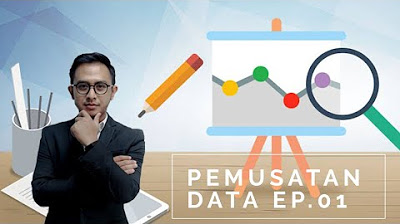Mean, Median, and Mode
Summary
TLDRThis educational video introduces the basic concepts of statistics: mean, median, and mode. It explains how the mean (average) is calculated by dividing the sum of data points by the total number, the median is the middle value when data is ordered, and the mode is the most frequent number. Using a simple example of children’s ages in a choir, the video demonstrates how each of these measures helps uncover trends and patterns in data. The content is designed to make these key statistical concepts clear and accessible for beginners.
Takeaways
- 😀 The mean is the average of a data set, calculated by adding all values and dividing by the total number of items.
- 😀 The median is the middle value of a data set when arranged in order. If there’s an even number of items, the median is the average of the two middle numbers.
- 😀 The mode is the value that appears most frequently in a data set.
- 😀 The three measures of central tendency (mean, median, and mode) help identify patterns or trends in data.
- 😀 In the example, the mean age of 15 children in a choir is calculated to be 11.5 years.
- 😀 The median in the example data set is 12, as it is the middle value when arranged in order.
- 😀 If there is an even number of items in the data set, average the two middle values to find the median.
- 😀 A bimodal data set has two modes, meaning two values appear with equal highest frequency.
- 😀 The script uses an example with 15 children to explain the calculations for mean, median, and mode.
- 😀 The mode in the example data set is 12, as it appears five times, more frequently than any other number.
- 😀 To explore more about statistics and central tendency measures, viewers are encouraged to visit the tutorial on GCF Global.
Q & A
What are the three measures of central tendency discussed in the script?
-The three measures of central tendency discussed are the mean, median, and mode.
How do you calculate the mean of a data set?
-To calculate the mean, you add up all the values in the data set and then divide the sum by the total number of values.
In the example with the choir, what is the mean age of the children?
-The mean age of the children in the choir is 11.5 years, which is calculated by dividing the sum of their ages (172) by the total number of children (15).
What does the median represent in a data set?
-The median represents the middle value in a data set when the values are arranged in order from smallest to largest.
In the given example with 15 children, what is the median age?
-The median age of the 15 children in the example is 12, as it is the middle value when the ages are ordered.
What should you do if the data set has an even number of values?
-If the data set has an even number of values, you find the median by averaging the two middle numbers.
What is the mode of a data set?
-The mode is the value that appears most frequently in the data set.
What is the mode of the ages in the choir example?
-In the choir example, the mode is 12, as it appears five times, more than any other age.
What does it mean if a data set is bimodal?
-A data set is bimodal if it has two values that occur with equal frequency, making them both modes of the data.
Why are mean, median, and mode important in statistics?
-Mean, median, and mode are important because they help summarize data and identify patterns or trends, making it easier to interpret the data.
Outlines

此内容仅限付费用户访问。 请升级后访问。
立即升级Mindmap

此内容仅限付费用户访问。 请升级后访问。
立即升级Keywords

此内容仅限付费用户访问。 请升级后访问。
立即升级Highlights

此内容仅限付费用户访问。 请升级后访问。
立即升级Transcripts

此内容仅限付费用户访问。 请升级后访问。
立即升级浏览更多相关视频

Statistics: The average | Descriptive statistics | Probability and Statistics | Khan Academy

Statistika Dasar Ukuran Pemusatan Data (Mean, Modus, Median) Data Tunggal dan Data Kelompok

ESTATÍSTICA ENEM I MÉDIA, MODA e MEDIANA

STATISTIKA Tentang Mean, Median, Modus dan Kuartil Data Tunggal

MÉDIA, MODA E MEDIANA | MEDIDAS DE TENDÊNCIA CENTRAL \Prof. Gis/

Kuliah Statistika Terapan - Pemusatan Data Sesi 1 Ep.04
5.0 / 5 (0 votes)
